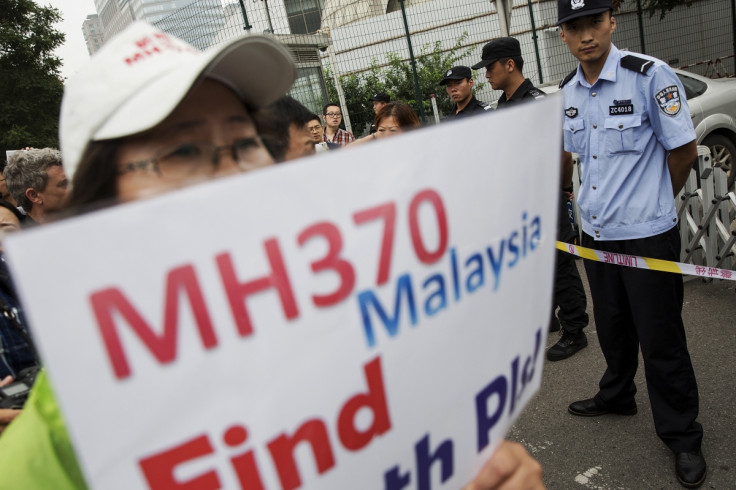Missing MH370 weeks away from becoming aviation's biggest unsolved mystery

Flight MH370, the Malaysia Airlines aircraft that disappeared while on a routine flight from Kuala Lumpur to Beijing on 8 March 2014 is weeks away from becoming aviation's biggest unsolved mystery since Amelia Earhart disappeared in 1937. Despite sonar net scanning 120,000 square km of the southern Indian Ocean, nothing has been found.
Of the 3 million components on the Boeing 777 aircraft, only one piece has actually been recovered. A flaperon was found on Reunion Island, thousands of miles away from the search area. No traces of the 239 people on board the aircraft, their luggage or even life jackets have been found.
The search operation is only months away from being called off. Martin Dolan, the head of the Australian Transport Safety Bureau which is leading the search operations has warned that without fresh clues, the hunt for MH370 will end in June, when the four ships complete combing the seas off western Australia.
So far, the assumption is that the aircraft ran out of fuel and spiralled into the ocean. Based on this sequence of events, searchers are prioritising an area within 20 nautical miles of the aircraft's last transmission from its satellite data unit.
But based on another possibility that someone was actually steering the plane and managed to glide it without power until it hit the water would mean that the search area would have to be tripled. Dolan said that was an unlikely scenario and it risks overwhelming investigators.
"Governments are just not willing to put the resources into that sort of potential extension," Dolan said. That is not surprising given that just in the current search area, the ships have collected about 20 petabytes of imaging data - the volume that could house the entire digital collection of the US Library of Congress several times over, reports Bloomberg.
Some of the world's most experienced search-and-rescue experts are increasingly coming to terms with the fact that the search operation may not uncover anything. The search vessels have already gone through most of the patch which has been identified as the most likely impact point of the aircraft.
Bloomberg news noted the irony that in a world where a $100 smartphone can be tracked for free, the location of a large $250m jet has yet to be traced close to two years after disappearing. And Dolan is ready to concede that the search may fail.
"We were ready for most things, but MH370 has been unpredictable all the way through. It's a possibility we will not succeed," he admits. Just as little headway has been made in locating the fuselage, investigators are still clueless as to what took place inside the plane after it took off from the Kuala Lumpur International Airport for Beijing.
Air controllers lost contact with the aircraft less than an hour after it took off and was approaching Vietnam. Military radar indicated that the plane took a left, turning back across Malaysia and then headed northwest up to the Straits of Malacca. An orbiting satellite picked up pings from the plane which showed that MH370 cruised south over the Indian Ocean for about six hours.
Malaysia claimed that the plane was deliberately steered off course with both the pilot Zaharie Ahmad Shah, 58, and co-pilot Fariq Abdul Hamid, 27, coming under scrutiny with their homes raided. But the US Federal Bureau of Investigation which analysed the pilot's personal flight simulator failed to provide any clues.
The plane was 12 years old, and was delivered new to Malaysia Airlines in May 2002. It had a maintenance check less than a month before it disappeared.
Even Larry Stone, the chief scientist from Virginia-based consultant Metron Inc, said: "I wouldn't be surprised if they didn't find it." The location, size and characteristics of the underwater search for MH370 make it the toughest he has ever seen.
Stone, who has tracked missing aircraft and ships for 50 years, had mapped out the resting place of Air France Flight 447 which was found two years after it plummeted into the Atlantic Ocean with 228 people on board in 2009. The search for the Malaysia aircraft is in an area where waters are up to 6 km deep and filled with trenches and submerged peaks.
Family members still seeking answers
Families members of those on board the missing aircraft are still hopeful but fear what will happen after June. "We are going to try as hard as we can to lobby for the search to continue beyond June," said Grace Subathirai Nathan, 28, whose mother was a passenger on MH370. "I need an answer," she said.
2016.02.15. Day 709#prayformh370 what is going to happen after June 2016? We seek answer, we seek truth, we seek 239 loved one #searchon2016年2月15日。 709天2016年6月后将会怎么样?我们寻求答案,我们追求真理,我们寻求239位至亲至爱 #㮴索不间断
Posted by MH370 Families on Monday, 15 February 2016
A Facebook post on Valentine's Day.
2016.02.14 Day 708On this Valentine Day#mh370 you are my #errthing 2016年2月14日 708日在这个情人节MH370你是我的一切
Posted by MH370 Families on Sunday, 14 February 2016
© Copyright IBTimes 2025. All rights reserved.






















